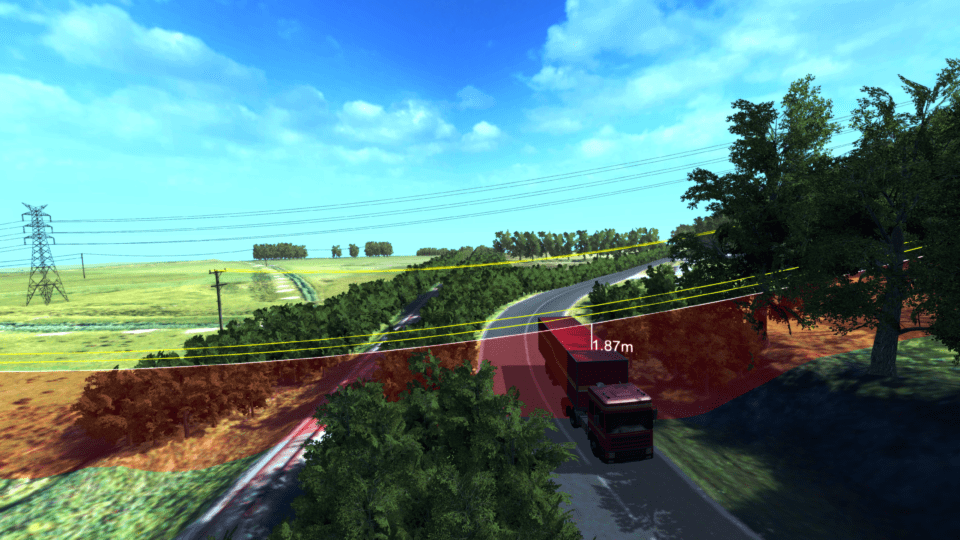Utility asset management: it’s time for a rethink
Fugro's game-changing Virtual World Asset Management (VWAM) platform is transforming how power infrastructure owners monitor the environmental context and condition of their assets. Robert Hoddenbach, global director power, explains.
18th March 2019 by Networks

Life is tough for today’s power utilities. Many work with ageing assets and limited preventative maintenance capability, yet face increased regulatory requirements and a continued push for sustainability and improved grid reliability.
The trouble is, current corporate resource management and geographical systems provide schematic or two-dimension data at best. And that’s no longer good enough.
It’s time for a rethink. At Fugro, we believe the starting point for that rethink is to gain a solid understanding of the location and condition of the network. By far the best way to achieve that is to use VWAM technology, which for many power utilities represents the first step in their digital transformation.
A VWAM platform hosts 3D data over time. Importantly, it also provides analytics and visualisation tools to help power grid operators resolve their complex, real-world, challenges in a virtual, 3D setting. It’s an asset assessment and management environment that’s ideal for storing and sharing accurate and up-to-date 3D geospatial information using critical enterprise systems like APM, ERP, GIS and work-management software.
Our cutting-edge Roames VWAM technology, for example, is revolutionising how power infrastructure owners monitor the environmental context and condition of their assets. Using remote sensing and automated cloud processing, Fugro creates a 3D representation of the real world. It can host, model and simulate an entire electrical network – in fact, the quality of the representation is so high that asset inspections and condition assessments can be carried out remotely.
What makes Roames unique is the way it converts LiDAR point data and imagery into intelligent asset objects. Doing this enables a rich, physics-based simulation in which any object interaction scenario can be simulated and modelled. It provides a safe and reliable way for operators to manage the risks associated with things like collision avoidance, clearance compliance and electrical ionisation.
Through our Roames world platform, we globally monitor more than 2.5 million spans of network on a yearly cycle; insights gained have enabled power utilities to deliver wide-ranging benefits and significant improvements in cost, risk reduction and performance.
For example, one client achieved 40 per cent savings on OPEX using Roames, with a significant reduction in penalties associated with outages caused by vegetation. Another discovered 27 times more pole defects (70 per cent of which were undiscoverable from ground inspections) with Roames, compared with their traditional asset management programme and aerial patrol methods, improving safety in the community. Clients have also reported smarter conductor clearance monitoring – in fact, one distribution system operator identified more than 18,000 spans with non-compliant clearance height enabling them to better prioritise work.
The full benefits of the technology have yet to be realised but in the UK, Australia and the United States, where many grid operators have adopted VWAM as their ‘business-as-usual’ framework, it’s evident that it has already been a catalyst for positive change.
Looking ahead, with ever-increasing requirements for networks to ensure energy security, sustainability and affordability, demand for VWAM platforms is expected to continue rising.
For further information email:
Comments
Login on register to comment
Related content

Power
The future for vegetation management
Why networks should focus on data not trees to overcome the costly challenges involved in vegetation management

Power
An unprecedented opportunity for change
Why short interruptions will matter in RIIO-ED2 and how to address them.

Power
Time for less talk and more action on decarbonisation
Core "oven-ready" solutions to decarbonising heat and transport exist today and should be implemented without delay, says WPD's future power networks expert.
Related supplier content

Power
Load patterns and lockdown: how Covid-19 is impacting electricity networks
Insights into dynamics on the low voltage network as the outbreak unfolds

Downloads
Protect electrical equipment from insulation failure
Insulation faults are a major cause leading to the eventual failure of electrical equipment. Partial discharge (PD) is a very reliable indicator of developing insulation faults. Regular PD testing allows users to detect and analyze PD activity

Heat
How E.ON. is helping the City of London become a zero emissions city
Discover Citigen. Deep in the heart of our bustling capital